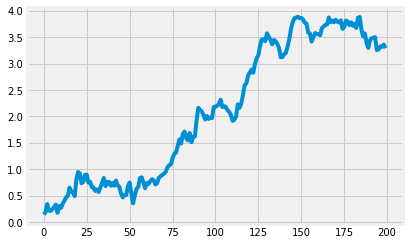Simulation Data¶
Orbit provide the functions to generate the simulation data including:
Generate the data with time-series trend:
random walk
arima
Generate the data with seasonality
discrete
fourier series
Generate regression data
[1]:
import numpy as np
import matplotlib.pyplot as plt
from sklearn.linear_model import LinearRegression
from orbit.utils.simulation import make_trend, make_seasonality, make_regression
plt.style.use('fivethirtyeight')
plt.rcParams['figure.figsize'] = [8, 8]
%matplotlib inline
Trend¶
ARMA¶
reference for the ARMA process: https://www.statsmodels.org/stable/generated/statsmodels.tsa.arima_process.ArmaProcess.html
[4]:
arma_trend = make_trend(200, method='arma', arma=[.8, -.1], seed=2020)
_ = plt.plot(arma_trend)
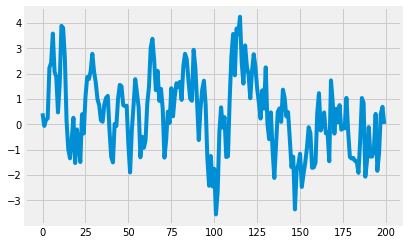
Seasonality¶
Discrete¶
generating a weekly seasonality(=7) where seasonality wihtin a day is constant(duration=24) on an hourly time-series
[5]:
ds = make_seasonality(500, seasonality=7, duration=24, method='discrete', seed=2020)
_ = plt.plot(ds)
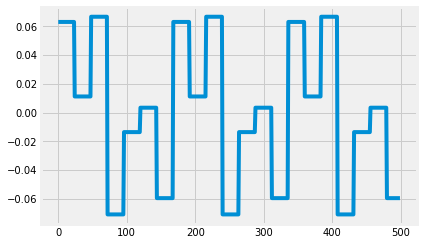
Fourier¶
generating a sine-cosine wave seasonality for a annual seasonality(=365) using fourier series
[7]:
fs = make_seasonality(365 * 3, seasonality=365, method='fourier', order=5, seed=2020)
_ = plt.plot(fs)
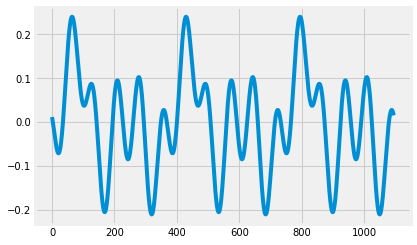
[8]:
fs
[8]:
array([0.01162034, 0.00739299, 0.00282248, ..., 0.02173615, 0.01883928,
0.01545216])
Regression¶
generating multiplicative time-series with trend, seasonality and regression components
[9]:
# define the regression coefficients
coefs = [0.1, -.33, 0.8]
[10]:
x, y, coefs = make_regression(200, coefs, scale=2.0, seed=2020)
[11]:
_ = plt.plot(y)
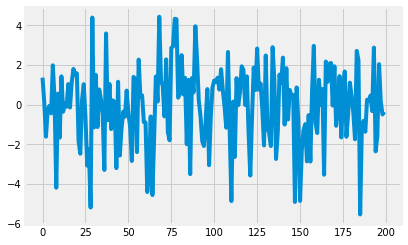
[12]:
# check if get the coefficients as set up
reg = LinearRegression().fit(x, y)
print(reg.coef_)
[ 0.1586677 -0.33126796 0.7974205 ]
